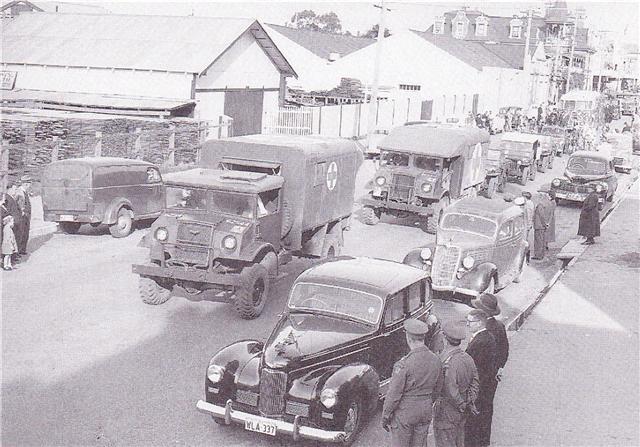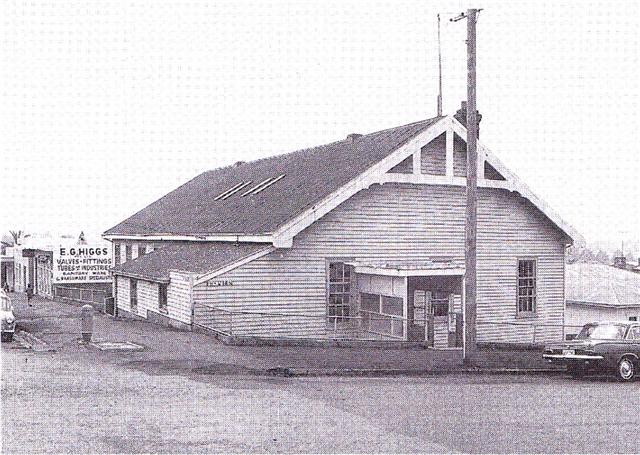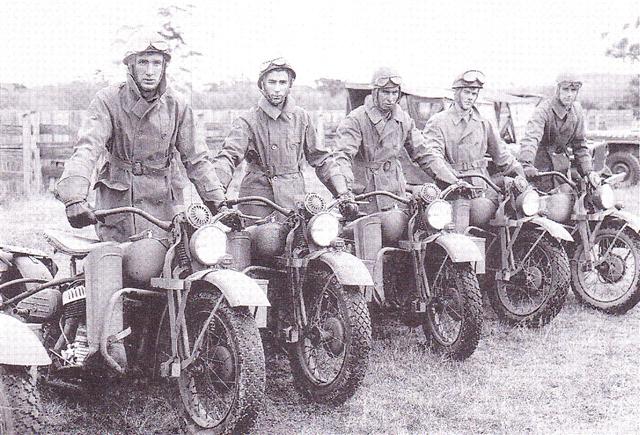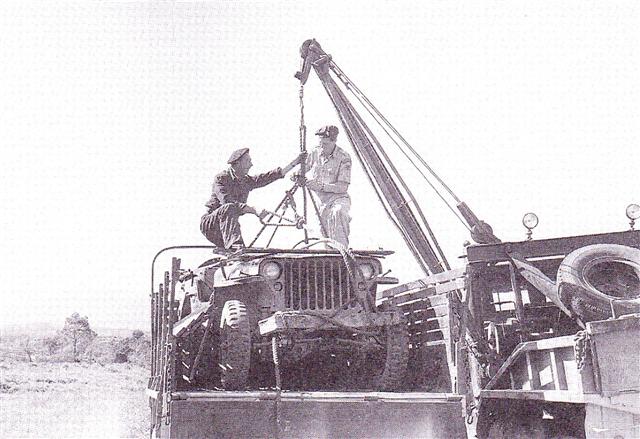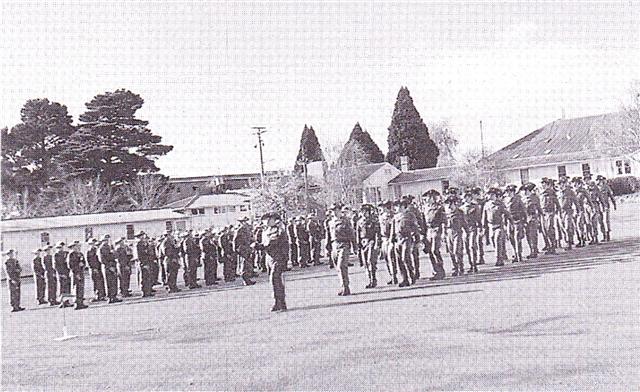Chapter 11
The Corps in Tasmania
The colonial Army Service Corps in Tasmania was stillborn. Approval for its establishment together with the intent to enlist members, and to acquire wagons from Sydney to establish the pattern for local manufacture, were signalled in the Defence Report for 1900. It was gazetted belatedly on 19 February 1901 as a transport section of a captain, sergeant, two corporals and 20 privates, either an inaccurate trade classification or bypassing the need for the supply element inherent in the Defence Report announcement 1. But by this stage the military forces had passed to Commonwealth responsibility, and with no Army Headquarters in being until 1902, the Secretary of the newly formed Defence Department declined to fund 'new increases'.
Lieutenant General Sir E.T.H. Hutton KCB KCMG 1848-1923
 His British army service encompassed campaigns in South Africa and Egypt, and he was then appointed Commander of the New South Wales Defence Force 1892-96, during which period he not only revitalised the NSW forces but also promoted cooperation with the other colonies’ forces, and advocated a joint approach to Australian defence.
His British army service encompassed campaigns in South Africa and Egypt, and he was then appointed Commander of the New South Wales Defence Force 1892-96, during which period he not only revitalised the NSW forces but also promoted cooperation with the other colonies’ forces, and advocated a joint approach to Australian defence.
Hutton then moved to command the Canadian militia, which he set about transforming into a national army, followed by service as a mounted infantry commander in the Boer War.
Following Federation he was contracted to command the Australian forces 1902-06. During this period, although hampered by budgetary restraint, he was able to gain control of the drifting ex-colonial forces, and direct their structure and activities to progressing into a balanced national field force.
Whereas the existing Army Service Corps in Victoria and New South Wales were simply transferred as going concerns to the Australian Military Forces, Tasmania had nothing to transfer other than an intention. The State Commandant appealed for at least 10 men to relieve the Permanent Artillery from Army Service Corps work, but the response was simply to budget unpaid volunteers in the Commonwealth Military Forces Estimates for the next two years, which offer was not taken up; nevertheless Hutton's reports to Parliament next year included the existence of an ASC element in Tasmania. However by 1904 both Hutton and the Estimates knew better, and Tasmania's phantom ASC disappeared from the order of battle 2. As Tasmania elected not to take the initiative shown by NSW which raised a planned unit immediately before Federation, so pre-empting any refusal by a Department of Defence which did not exist until March of 1901, the raising of an Army Service Corps element in Tasmania had to await Commonwealth instructions, whenever they might be forthcoming.
Field Marshal Earl Horatio Herbert Kitchener KG KP GCB OM GCSI GCMG GCMG GCIE ADC PC 1850-1916
 Commissioned from the Royal Military Academy Woolwich into the Royal Engineers, he served as a surveyor in the Near East and in the failed relief of Khartoum. He became governor of the Red Sea Territories and commander of the Egyptian army, recapturing the Sudan after winning the battle of Omdurman in 1898. He was appointed commander of the Imperial forces in South Africa in 1900, bringing the Second Boer War to a successful conclusion, coincidentally signing the death warrants of Lts Morant and Handcock.
Commissioned from the Royal Military Academy Woolwich into the Royal Engineers, he served as a surveyor in the Near East and in the failed relief of Khartoum. He became governor of the Red Sea Territories and commander of the Egyptian army, recapturing the Sudan after winning the battle of Omdurman in 1898. He was appointed commander of the Imperial forces in South Africa in 1900, bringing the Second Boer War to a successful conclusion, coincidentally signing the death warrants of Lts Morant and Handcock.
After a term as Commander in Chief in India and a failed attempt to become Viceroy, he toured the Empire, in the process preparing a report for the Australian government recommending a restructuring from the Hutton army to cope with the expansion arising from his recommended military conscription of all Australian youths.
In World War 1 he was Secretary of State for War, establishing the manpower and munitions necessary for the great prolonged and intense effort which he predicted. He died when a warship carrying him to a conference in Russia was sunk by a German mine.
Tasmania’s population did not warrant a sizeable field force element, so its AASC allocation was for small Militia Garrison Details of three for each for Hobart, Hobart Forts, and Launceston. The funding was deferred from the 1903-4 budget, and was not reinstated until 1906, when the six men for the Hobart area – a sergeant, corporal and four soldiers - were embodied 3. This group was not entirely on its own, as press photographs show a variety of officers supervising training and service work during camps, and the simple matter of the forces in Tasmania wanting adequate support is sufficient argument that this apparent training assistance was not just photo opportunities. However the Garrison Details remained officially at the low level until 1911 when a Militia mixed brigade for Tasmania Military District was authorised as a lead in to the Kitchener Universal Training scheme, and with it the imprimatur to raise 5th Infantry T&S Column at an authorised strength of 231; Capt D.P. Young, formerly Adjutant and Quartermaster of 4 LH Regt, returned from the Reserve to raise and command the unit. Also in that year, as a result of the decision to regularise the management of Army horses, 6 MD Remount Section of a sergeant farrier, two shoeing smiths and nine drivers was authorised on the Permanent staff of the District Headquarters. Addition of a Permanent AASC instructor completed the effort for a quick fix of a base from which to launch the Universal Training expansion 4.
Under Universal Training, Tasmania's recruiting catchment area did not go nominally beyond the mixed garrison brigade-equivalent which it had under the Hutton plan, although the brigade now to be raised was an expanding one. 5 Inf T&S Col was renamed, in concord with the Army-wide retitling, to 23 Coy to match the supported 23rd Brigade, on the establishment in Table 11. The unit also had to undergo a change in character as well as organisation, as the earlier and recently recruited volunteer privates were not re-engaged and the first cohort of 18 year-old senior cadet conscripts joined in 1912. By the outbreak of war it stood at 56, which provided a fertile basis for volunteer recruitment into the First Expeditionary Force and subsequent contingents 5.
From its inception in 1906, the Militia AASC provided supply and transport support for the annual Militia camp. This began at Ross with Brighton a year later as a variant, extending with the force expansion and activities to include Perth in 1913 and Pontville in 1914 6. Given the support liability, it was necessary to fit in what training it could between its supply and transport tasks within the confines of an eight day period. The Syllabus for Camp extract from 6 MD Orders of 1912 is typical in being essentially a programme of work: the AASC pitching camp and organising supplies a day early, then meeting the incoming troops to transport baggage from railway station to camp, with a reversal of this at the end of camp. In between, amongst routine and tactical support of units, the AASC had to undertake the technical training laid down in the syllabus. Enlisting men who knew the grocery, forage, butchery, horse handling and repair trades helped, as did the assistance of the Instructional Corps members available to teach and advise in both military and technical skills. Officer Commanding Capt Young was sent to India for experience with the Indian Army Service Corps in 1913, further seeding the growing local expertise.
A Tasmanian section of the Australian Volunteer Automobile Corps was raised later than in most states in 1910, in the form of retired artillery officer Lt James Boag now recommissioned, who had provided his car for Kitchener during his visit and no doubt been encouraged to go this step further by the acclaim from that event. Although a volunteer arrangement, it was treated seriously enough, with six officers by 1914 who attended General Staff courses and sat for promotion examinations, however members did not seem to achieve high results in map reading which was allegedly their forte. The Corps did not, however, find a place in the AIF which was committed to static fighting for the first eighteen months, and it was disbanded by 1916, before the possibility of use in Sinai and Palestine really opened. The remaining members in Tasmania were transferred to 23 Coy 7.
Tasmania's quota for what became known as the First Contingent was a section of 4 Coy of 1 Div Train, however surplus AASC volunteers were directed to 10 Coy (1 Res Park) 8. A camp for the Force was opened at Pontville on 13 August 1914, volunteers being enrolled by area recruiting officers throughout the State, assisted by commanders of Militia units – for the AASC unit by Officer Commanding 23 Coy, Capt Young who himself volunteered. With the quota quickly filled, a further successful push to fill additional units and reinforcements began on 1 September, local council mayors and wardens acting as enrolment officers outside city areas. Training of the AASC detachments began at Pontville, but the 27-man section of 4 Coy under 2Lt C.G. Farmer was shortly called forward to Victoria, together with the Western and South Australian Sections, to train with the parent unit. Similarly the 10 Coy details and Young, appointed to the headquarters of 1 Div Train, joined their units in Melbourne. In consequence there were no AASC members when the Tasmanian contingent embarked at Hobart on 24 October however the 4 Coy Section men joined their comrades on Geelong in Melbourne.
Following the embarkation, the AIF training camp was moved from the inadequate Pontville site to Claremont, which grew progressively from an initial tent village to a hutted camp that remained the State's AIF depot for the rest of the war. From mid-November, a further request for volunteers was received less enthusiastically; a call for reinforcements did not have the same attraction as the initial call to arms, and it was only after the Gallipoli losses that there was a similar response to the initial one; other surges occurred after other major battles, but recruiting to meet the ongoing drain on the AIF gave the same difficulty as in the other states. For the AASC, Tasmania became a source of reinforcements for 4 Coy, which it had originally provided with about a quarter of its strength. A further 74 members were enlisted into the AIF and trained for that unit in the following years. The State was also able to contribute elements to specialist units – 13 Coy (1 Fd Bky, 1 Fd Bchy) and a good turnout in late 1915 when men normally over-age for overseas service were accepted for the remount units being formed for Egypt, Tasmania forming half of 4 Sqn of 1 Remount Unit. In all 117 Tasmanians volunteered for this duty, but the project had a restricted life as the British Army preferred the local civilians; the units were disbanded in 1916 and reduced by three quarters, with the surplus volunteers absorbed into other suitable employment: Pte E.E. Poke transferred to the canteens service, Pte A.P. Devereaux to 10 LH Regt and Pte W.P. Scott moved to England to join the Australian contingent of munitions workers.
Many other Tasmanians found their way into the AASC units overseas. Dvr C.E.B. Moore left Australia as a motor driver with the Engineers, moved to 5 Field Ambulance, then 2 Div Sup Col and frnally 2 MT Coy; Tpr T. Tonks of 3 LH Regt joined 32 Coy after being three times wounded; and Pte F. Grundy of 12 Battalion transferred to 2 Fd Bky. The AIF managed its own manpower overseas, and had to relocate skills to meet new or deficient trade requirements as well as retain as many as possible medically downgraded troops in view of the reinforcement shortfalls in 1917 and 1918. Not that the traffic was all one way: Pte R. McCann DCM was wounded with 7 Field Ambulance, joined 4 Div Sup Col, then moved on to 4 Machine Gun Company; Gnr J.K. Mackey began with 18 Fd Bty, moved to 17 Fd Bty, then to 4 Div Sup Col, then back to 17 Fd Bty; and Cpl M.H. Cummings MM from 5 Div Sup Col to 2Lt in the Army Flying Corps. These are but a few examples of the very considerable mobility between units of different arms; a parallel traffic took place between various AASC companies as reorganisations and reallocations met the changing needs of the force. Some however saw the war through without change, as did Dvr H. Daly who enlisted in 4 Coy on 18 August 1914 and was discharged from the same unit in the same rank in January 1919. Capt Young served through with 1 Div Train reaching the rank of major, while 4 Coy's original section commander finished as Maj C.G. Farmer MC, its officer commanding.
For 23 Coy, apart from its losses to the AIF and a liability to help support the AIF training camp, nothing changed from its role of accepting the yearly intake of universal trainees from the senior cadets, training them on the night parades, and supporting the Militia eight day camps. These intakes progressively built up the unit and, as the war went on, those who did not succumb to the pressures to volunteer for overseas service gave the unit a more mature character than existed in 1914, particularly with the aid of returning rehabilitated wounded from the front, who were employed as instructors and coincidentally recruiters. The meddling with unit numbers did, however, give the semblance of change – to 4 Coy in 1919 and as a last hurrah for the manipulators of the training brigade system, to 34 Coy in 1920 9.
The 1921 restructuring of the citizen Force affected Tasmania's AASC little. Outside the mainstream, as with the other less populous states, it retained the same single company structure, called now 12 Bde S&T Coy which was nominally part of 5th Division whose head-quarters was safely in Western Australia and HQ 5 Div Train in Brisbane. Lt-Col D.P. Young was originally listed with the unit, but Maj O.F. Ford took command until the AASC restructuring of 1928 when Capt J.H. Hill MM took over. This reorganisation had little effect other than some internal section reclassification as did the further national change of 1930, and the 1934 reclassification of the Horse Transport section as Mechanical Transport was also largely academic until the motor vehicles were hired in quantity at the beginning of World War 2. Command devolved to Maj W.H. Gray from 1934 until 1938 when a further internal division into Supply Column and Ammunition Section was again substantially cosmetic; Lt-Col C.G. Farmer MC assumed command of AASC units in 6 MD in the expanding climate of 1939 10.
The original Permanent Supply and Transport Section from pre-World War 1 was continued through and after the war. This section was basically the Remount Section operating 12 Remount Depot at Anglesea, 13 Remount Depot at Launceston, and being misused for additional supplies and transport tasks. The ADST position continued unfilled until 1938, but the DADT(MT) was occupied by Militia officers from its inception in 1921, although the initial lack of even a single vehicle would not have seemed to warrant the successive attentions of Maj R.M.W. Thirkell MBE, Capt G.C. Peters DFC and Capt W.J. Mason. Peters' return in 1934 was made worthwhile with the raising of the Permanent 6 MT Section, though this consisted of only six drivers compared with its war establishment of 71 when it was to become 6 MT Depot; Capt N.P. Mulcahy took on the position of DADS from 1936, a position given real meaning with raising of the Militia 9 Sup Pers Coy for garrison support tasks two years later, when he also took over as DADST 11. But the longer term general understaffing of the District Base was simply a function of the task to be carried out. It had been and always was a Citizen Force state. Support needs were adequately covered by the operative unit 12 Bde S&T Coy, so it was not until the build up at the beginning of World War 2 that a full-time-duty staff would be necessary.
As an area not considered under immediate threat, Tasmania's primary function in World War 2 was to provide units, then replacements and supplies, for the war effort elsewhere. This began in October 1939 with a Section of 6 Div Amn Coy raised, at Brighton camp then sent to Puckapunyal to join the unit’s other interstate contingents; in May 1940 there was the follow up of 7 Div Amn Coy and later drafts to other units and reinforcements. While the threat to the State may not have been regarded as significant, like each other military district it formed its covering force from the resident Militia brigade, supported by HQ 6 MD AASC commanding 6 MD Sup Coln, 6 MD Amn Coy and 6 MD Pet Coy for direct support, and 6 MD Pet Park as corps troops.
When the structure of the Army on the mainland was changed in 1942 to field force formations and lines of communication areas, Tasmania did not fit in any way into those Armies and Corps, so a Tasmania Force was raised to command the residual field units 12. As the other special forces raised at the time were in the front line – Northern Territory and New Guinea Forces – it is hard not to regard this force designation as being a sop to a state government which had always been sensitive to Tasmania's status, carrying over from early colonial times; but regardless of the cause 31 Coy was allotted as the AASC unit for the force 13.
The complementary Line of Communication Area structure was provided initially by DADST Mulcahy controlling one section of 9 Sup Pers Coy which was called up for the duration of the war and the newly raised 5 Res MT Coy. For some reason, perhaps that of trying too hard or finding it easier to use contractors to get the job done, there was a feeling throughout all military district staffs of the Army in the early stages of the war that the base structure should support Militia and AIF training with the consequent effect of making the field force companies superfluous. At a conference held at DST Melbourne in January 1940 the ADSTs and DADSTs of the military districts were forcefully reminded that the field units had to be practised in their field distribution function, and that the supplies and transport system had to be organised on that basis. This was an echo of much earlier times, colonial and pre-World War 1, when commandants and inspector generals Australia-wide made trenchant criticisms of reliance on commercial and base systems rather than forcing field force companies to become adept in their technical and tactical operations. The result of this admonition brought a renewed role for the companies, and specifically for 12 Bde Sup Coln at the training areas at Brighton, Launceston and Mona Vale.
Further expansion brought an ADST staff controlling a transport group of 110 Res MT Coy, 10 Aux HT Coy and a platoon of 6 Amb Car Coy; a supply group of 9 Sup Pers Coy and 6 MD BIPOD; a vehicle hiring and impressment group of 9 VCC and 6 MD VRD; and a remount group of the Remount Section and 6 MD Remount Tp. The stability of activities was such that little changed by 1943, other than 6th Military District being renamed Tas L of C Area and the garrison Tasmania Force; 110 Res MT Coy was renamed 123 GT Coy; the district bulk depot had become BSD Ross, then 15 Sup Dep Coy commanding 90-93 Sup Dep Pls, 10 Fd Bky and 7 Fd Bch Coy being added to support the supplies units, and the BIPOD renamed for the L of C Area. The remount elements were consolidated into a section of 6 Rmt Sqn, horse transport remaining in steady use for both AASC and static units as a war economy measure 14. Tasmania Force evaporated later in the year, and the State became an administrative area supporting the dispatch and return of troops for the training and battle areas to the north.
Between the end of World War 2 and the formation of the Regular Army and reconstitution of the Citizen Military Forces, the Interim Army in Tasmania was essentially a scene of demobilisation of the members returning home from the war, by 1946 the residue being an understrength 123 GT Coy and 90 Sup Dep Pl 15. After the return of the Citizen Military Forces, 6 MD was allotted 11 Coy at Hobart in 1951, the normal quota for Tasmania, but another break with the traditional unit 12 Coy. The introduction of National Service in 1951 brought expanded numbers, and this time around the planners decided to allot more than the usual single company to the smaller states, Tasmania Command raising 6 Sup Pl, 134 and 135 Sup Dep Pls and two additional companies in 1952: 44 Coy under Capt W.G. Lowe at Devonport with a platoon at Deloraine a year later; and 47 Coy under Capt J.R. Cook at Burnie with a platoon at each of Smithton and Wynyard in the following year. All three companies were concentrated for a combined camp at Brighton in 1953 so that a large scale driving and servicing course could be run to bring the new units quickly up to a standard where they could effectively begin unit training. A second combined camp was conducted by commanding officer Lt Col L.T. Stephens in 1955 to reinforce the previous year's unit training with additional emphasis on camouflage and air supply. This command arrangement, similar to other commands, took the form of HQ Tas Comd Tps RAASC which had been raised to command what became, for Tasmania, quite a remarkable RAASC empire. By the peak year of 1957 when it was commanded by Lt Col L.A. Simpson it had three strong companies and two extra platoons almost making a fourth. Then while 44 Coy had some windfalls – disbandment of an infantry battalion at Burnie allowing it to inherit a more expansive training depot plus additional soldiers, that restructuring also saw the demise of 11 Coy.
As was happening in other states, the whole period from 1952 through the 1950s and 1960s was a period of continual flux for the AASC in Tasmania, reminiscent of but exceeding the changes of the Militia before 1921. Platoons were opened, closed and transferred between companies at (alphabetically) Anglesea, Burnie, Deloraine, Devonport, Latrobe, Scottsdale, Sheffield, Smithton, Ulverstone and Wynyard. This confused chopping and changing was destructive on both proper training and maintenance of any continuity of unit tradition, which latter was a commodity unknown to the chess players at Army Headquarters. The reductions of 1960 resulted in disbandment of the supply depot platoons, and in the subsequent 1965 restructuring 44 Coy remained based on Devonport with its 160-163 Tpt PIs and workshop rotating through the north coast towns, 47 Coy with its 172-175 Tpt Pls being transferred to Hobart, and both remaining through the end of the RAASC era. This has been well covered in a history With the Volunteers by the last OC of 44 Coy RAASC, Maj D.M. Wyatt.
For its infrastructure 6th Military District began with a regular DADST and staff on the headquarters, plus 106 Sup Dep Pl and 108 Tpt Pl. These two very small units were consolidated in a sensible move in 1957 into 106 ST Pl. When Tasmania Command was absorbed into Southern Command in 1960 the DADST appointment became a Capt RAASC, at which level it remained 16. Tasmania was without Regular field units, its activities centring on CMF training, but there was a special organisation within the Supplies and Transport empire. This was the Army Food Scientific Establishment at Scottsdale, inheritor of Sir Stanton Hicks' drive for development of proper nutrition for the Army. This Establishment, controlled by Dr R.C. Hutchinson, as well as providing the scientific input for this nutritional base, developed field ration packs for the Army, though its long term existence provided an ongoing oversupply of technical expertise which led to the original useful and palatable ration packs gradually changing to fad and gimmick components; it was noticeable in Vietnam that troops who had to carry several days of rations would discard half of the components to rid themselves of the weight of the less palatable and useful items.
Significant real tasks arose from natural disasters. For his efforts with a DUKW during the 1960 Hobart floods Capt B.G. Coghlan was awarded an MBE. But on a larger scale during the bush fire disaster in early February 1967, the whole army in Tasmania, reinforced with Regular members from South Australia, turned out to fight fires and provide support to the emergency services and community. Included in this were 44 and 47 Coys and 6 Sup Pl, which remained on duty not only for the fire fighting period but also to assist in the aftermath of restoration of some sort of normality to the area. In the words of the after-report on the operations:
Both 44 Coy and 47 Coy logged thousands of miles and provided a continuous work force in delivering-tray, fence posts, clothing, timber and a variety of other loads. Their work was arduous and demanded a high standard of driving ability and careful planning.
The work achieved ... was a most significant contribution to the future of the rural community and their economy. The very presence of the hard working Army teams gave the farmers the necessary boost to their own morale and did much to set the wheels in motion again. The many expressions of gratitude are evidence to this.
These units comprised citizen soldiers of the state who served it well not only in the direct defence role but also as part of the community in time of civil crisis or need, bringing their expertise, organisation, training and equipment to the assistance of the-civil administration wherever required in keeping with the ongoing tradition of the RAASC.
The end for RAASC came on 3 June 1973 when a parade was held at Anglesea Barracks Hobart reviewed by the Governor Sir Edrick Bastyn. It marked the transition from RAASC to the Royal Australian Corps of Transport, changing a tradition begun in 1803 with the imperial Commissariat, almost picked up as a military unit in 1901, begun formally in 1906, and now brought into a different form 67 years later. The ASC's role in Tasmania was never one of high excitement and, apart from the last twenty years, not one great in strength, but it was part of the steady ongoing tradition of service, providing reliable support in peacetime training and its fair quota of men and units in war.
Footnotes
1. Journals and. Printed Papers Parliament of Tasmania 1901 No 49 Defence Report; Hobart Gazette vol XCVI of 19 February 1901.
2. AA B168 1901/2116 Memorandum Commandant to Secretary for Defence of 9 August 1901; CPP 1901-02 vol II Defence Estimates 1901-02, p95; 1903 Defence Estimates 1902-03, p131; Hutton Report, p19.
3. See Appendix 3; CPP 1907-8 vol II Report by the Military Board, p12.
4. 6 MD District Order 9/1912 Annual Establishment of the Commonwealth Military Forces 6th Military District 1911-12; MO 2/1911, 189/1913.
6. MO 74/1907; Tasmanian Mail 14 November I908; MO 650/1912, 555/1913.
7. Weekly Courier 10 February 1910; Army List 1910-16.
8. The following paragraphs are based mainly on Broinowski, p2-5, 8, Muster Roll, p221f; and Report upon the Department of Defence 1914-1917 Part 1, p73-4, 76.
9. MO 150/1919, 103/1920; Report on DOD, p276.
10. CYB 1921-38; Army List 1921-40 AA MP729/6 37/401/79 QMG Minute Appendix Z.
11. Army List 1920-40; AA MP729/6 37/401/79 QMG Minute Appendix Z.
12. AWM 52 10/2/23; Army ORBAT December 1941.
13. AA MP729/6 37/401/1097; AWM 54 199/2/5 Maintenance Organisation Appendix A, p4; Army ORBAT December 1941.
14. AA A5954 255/3 S&T Conference Précis; AWM 54 703/5/4 Amy ORBAT 1942 AASC, p27-32; Army ORBAT October 1942-June 1943.
15. Amy ORBAT 1946; the following paragraphs on the CMF rely substantially on Wyatt D. With the Volunteers p221-314.
16. AWM 54 703/5/2 Army ORBAT 1946; Army ORBAT 1958, 1960, 1963.









